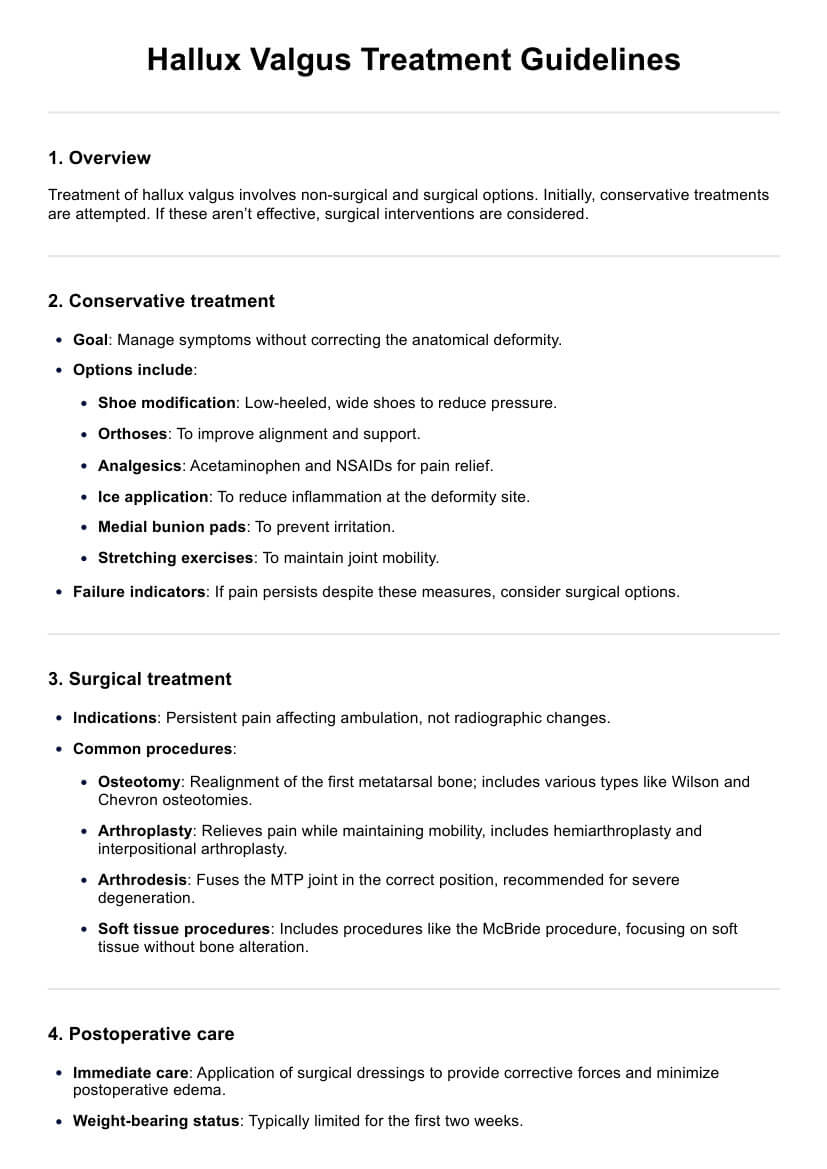Hallux valgus is primarily caused by genetic predisposition, improper footwear, and abnormal foot mechanics, such as a flat foot or improper gait.

Hallux Valgus Treatment Guidelines Handout
Explore effective treatments for hallux valgus, including both non-surgical methods and surgical options to manage pain and deformity.
Use Template
Hallux Valgus Treatment Guidelines Handout Template
Commonly asked questions
Yes, mild to moderate cases can often be managed with non-surgical treatments, such as proper footwear, orthotics, and physical therapy, to alleviate symptoms and prevent progression.
Recovery from hallux valgus surgery typically ranges from 6 weeks to 6 months, depending on the type of surgery performed and the patient’s adherence to post-surgical care instructions.
EHR and practice management software
Get started for free
*No credit card required
Free
$0/usd
Unlimited clients
Telehealth
1GB of storage
Client portal text
Automated billing and online payments











